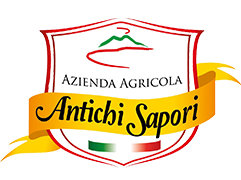Albicocca del Vesuvio
Una delle prime testimonianze sulla presenza dell’albicocco in Campania la dobbiamo allo scienziato napoletano Gian Battista Della Porta che, nel 1583, nell’opera Suae Villae Pomarium ci parla di due tipi di albicocche: le “bericocche” e le più pregiate “crisomele”. Da questo antico termine deriverebbe il napoletano “crisommole” ancora oggi usato per indicare le albicocche. Nel testo ad opera di autori vari, “Breve ragguaglio dell’Agricoltura e Pastorizia del Regno di Napoli”, del 1845, si riconosce l’albicocco come l’albero più diffuso nell’area del napoletano, e precisamente in quella vesuviana, “dove viene meglio che altrove e più maniere se ne contano, differenti nelle frutta …”. Evidentemente già allora vi era un certo numero di ecotipi che offrivano frutti diversi a seconda delle caratteristiche della varietà di appartenenza. Oggi se ne riconoscono oltre 70, tutti raggruppati nella denominazione di “albicocca Vesuviana” poiché tutti originari, per l’appunto, da quest’area, zona nota per la notevole fertilità dei terreni, che, essendo di natura vulcanica, sono ricchi di minerali e in particolare di potassio, elemento conosciuto per la sua influenza sulla qualità organolettica dei frutti, e che, in questo caso, contribuisce a conferire alle albicocche un gradevole e caratteristico sapore. Recenti ricerche hanno confermato l’elevata attitudine delle albicocche vesuviane alla trasformazione in succhi e sciroppati per l’elevato contenuto zuccherino.
 Apricot of Vesuvio
Apricot of Vesuvio
Thanks to the Neapolitan scientist Gian Battista Della Porta, in 1583, we have one of the first testimonies of the presence of apricots in Campania, with his book “Suae Villae Pomarium”, in which he writes of two kinds of apricots “bericocche” and the better quality ones “crisomele”. The Neapolitan “crisommole”, still used today to indicate apricots, should derive from this antique word. In the books and works by other authors, “Breve ragguaglio dell’Agricoltura e Pastorizia del Regno di Napoli”, written in 1845, the apricot tree is identified as the most common one, after the fig tree, in the Neapolitan area, and in particular in the Vesuvian one, “where it grows better than elsewhere and you can count more kinds, of different fruits...”. Evidently already back then there were various ecotypes that offered different fruits according to the characteristics of the variety they came from. Today there are 70 different ones, all grouped under the definition of “albicocca Vesuviana”, since they all originate in this area; a region known for the high fertility of the soil, a volcanic soil, rich in minerals and in particular in potassium, an element known for its influence on the organoleptic qualities of fruits, and that confers to the apricots their pleasant and characteristic taste. Recent researches have confirmed that these apricots are suitable for the production of juices and syrups for they have an elevated sugar content.




